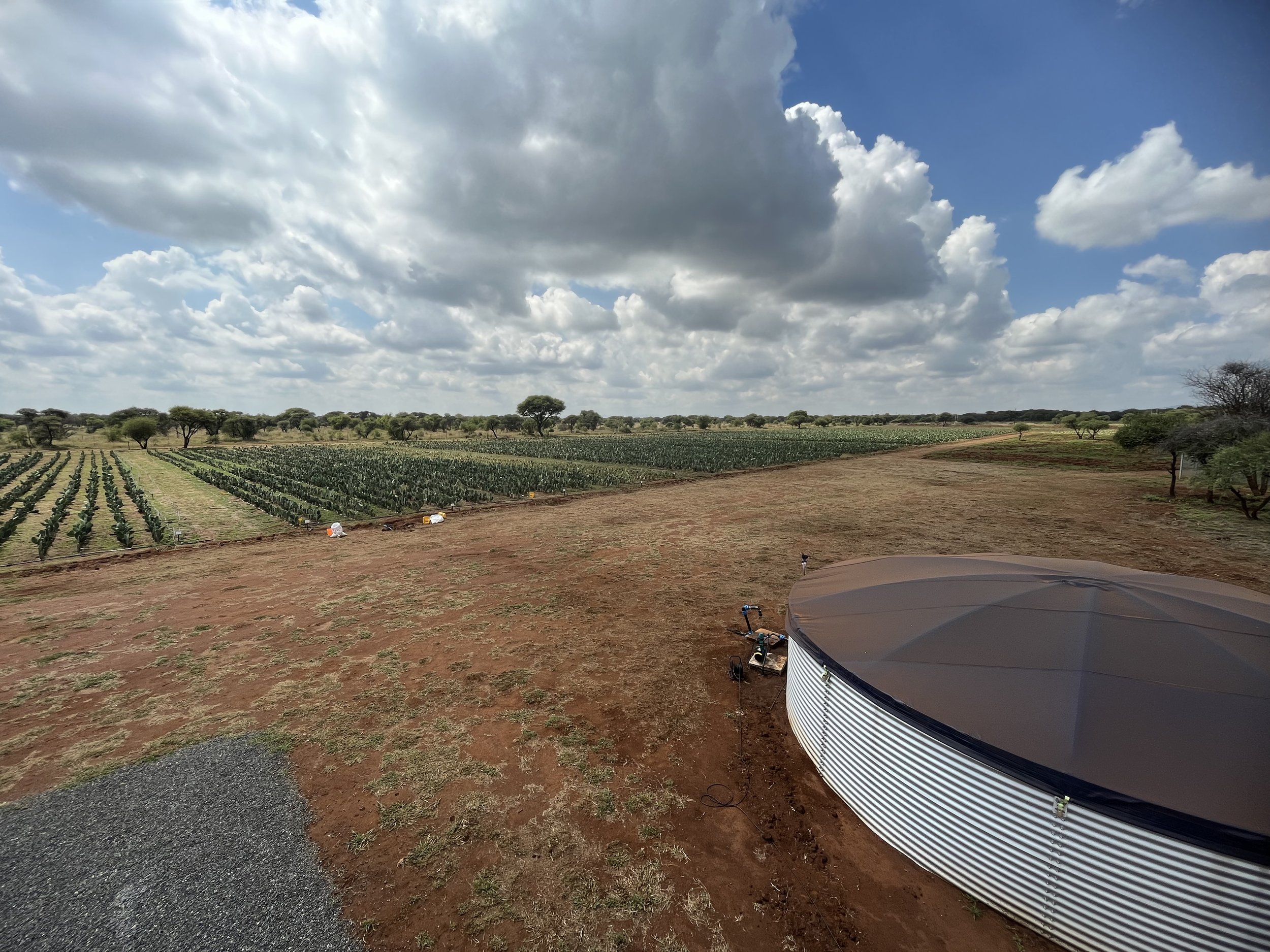Case Study Report:
Investigating Opuntia Ficus-Indica as a Biomass Energy Feedstock
Start Date: October 2022
Location: Limpopo Province, South Africa
Hectares Planted: 5 of 8 ha
Jobs created: 16
Carbon Neutral Energy Systems (C-NES) is currently undertaking a project to investigate the planting, growing, and harvesting techniques of Opuntia ficus-indica for use as dedicated biomass energy feedstock. The project involves planting 8 hectares of Opuntia Cactus and testing various planting parameters such as plant density, row spacing, nutrients, and varietals to determine the best practices for growing Opuntia ficus indica as a biomass energy feedstock.
The project, situated in the Limpopo province of South Africa, is not yet a year old. So far, C-NES has planted 5 hectares of Opuntia ficus-indica, with another 3 hectares currently being planted. The project's primary objective is to explore the biogas potential of Opuntia ficus indica as a sustainable energy source. C-NES is conducting research and testing to determine the cactus's optimal harvesting and processing methods to maximize its energy yield. The project is also focused on creating jobs and contributing to the local community's economic development.

Opuntia ficus-indica
Opuntia ficus indica, also known as prickly pear cactus, is a species native to Mexico but has been introduced to many parts of the world. It is a hardy plant well-suited to arid and semi-arid environments and can grow in various soil types.
Opuntia cactus has enormous potential as a feedstock for bioenergy production. The cactus is fast-growing, requires minimal water and fertilizer, and has a high yield potential. It also has a low lignin content, which makes it more easily digestible and ideal for biogas production.
The Opuntia cactus is also valued for its edible fruit, leaves (cladodes or nopales), and seeds. Its fruits, known as tunas and cladodes, are edible and used in various dishes in Mexican cuisine. The oil from the seeds of the fruit is a versatile and valuable product with many potential health benefits.
Employment
The project has created employment opportunities for local communities. Currently, there are 18 full-time employed staff members on site.
If this project progresses from being a crop test to a full-scale biomass feedstock plantation with an anaerobic digester, this will create additional employment opportunities in the area. Additionally, the project can be done in collaboration with local farmers who can receive training on planting and maintaining the cactus crop. The farmers would then grow, harvest and deliver the cladodes to the anaerobic digester.
The project also has the potential to provide energy access to nearby households and farms, which would positively impact the local economy.
Experimental Crop Test
A biomass energy feedstock plantation needs to be at least 1 000ha and ideally would be 5 000ha. Scaling up the project from 8 hectares to over 1 000 hectares will require significant planning and investment. By conducting these experiments on a smaller scale, as is being done in this project, C-NES can fine-tune its processes and minimize risk when scaling up the project. By determining the best planting parameters for Opuntia ficus indica, C-NES can optimize the crop's growth and yield, ultimately leading to more efficient biogas production. This will help reduce the overall cost of production and increase the project's profitability.
C-NES's Crop Test involves testing various planting parameters such as plant density, row spacing, nutrients, and varietals to determine the best practices for growing Opuntia ficus indica as a biomass energy feedstock. The project has already shown promising results, with the first 2 hectares of Opuntia ficus-indica showing significant growth. The experimental parameters have also proven insightful, indicating the varietals and growing regimes responding best.
Plant density and row spacing are essential parameters to test as they determine how many plants can be grown per hectare and the space needed between rows for efficient harvesting. The key is determining the optimum planting density for maximum biomass yield per hectare. Nutrient testing is also essential to decide on the optimal levels of fertilizers needed for optimal growth and yield. Testing the different varietals helps determine which varieties are most suitable for the project's specific climate and soil conditions.
Anaerobic Digestion
The Cactus is harvested for anaerobic digester feedstock after two years of growth. Thus, C-NES plans to construct the biogas digester only in 2024. The harvested cladodes (flattened pads of the cactus) will then be used as feedstock for biogas production. The biogas produced can be used to power nearby houses and farm equipment or be converted into synthetic fuel. The biogas produced is a clean and renewable energy source, which helps reduce carbon emissions and mitigate the effects of climate change.
Conclusion
C-NES's project investigating Opuntia ficus indica as a biomass energy feedstock has the potential to contribute to the development of sustainable energy solutions while creating employment opportunities for local communities. The project's focus on creating jobs and contributing to the local economy is a model for sustainable development. And while the project has not yet produced any biogas, it is establishing a promising foundation for the future use of Opuntia ficus indica as a renewable energy source, which will contribute to reducing carbon emissions and mitigating the effects of climate change. The experimental work being conducted is invaluable for determining the best planting parameters for the crop. It will help inform the scaling of the project up from 8 hectares to over 1 000 hectares for full-scale biomass energy production.


